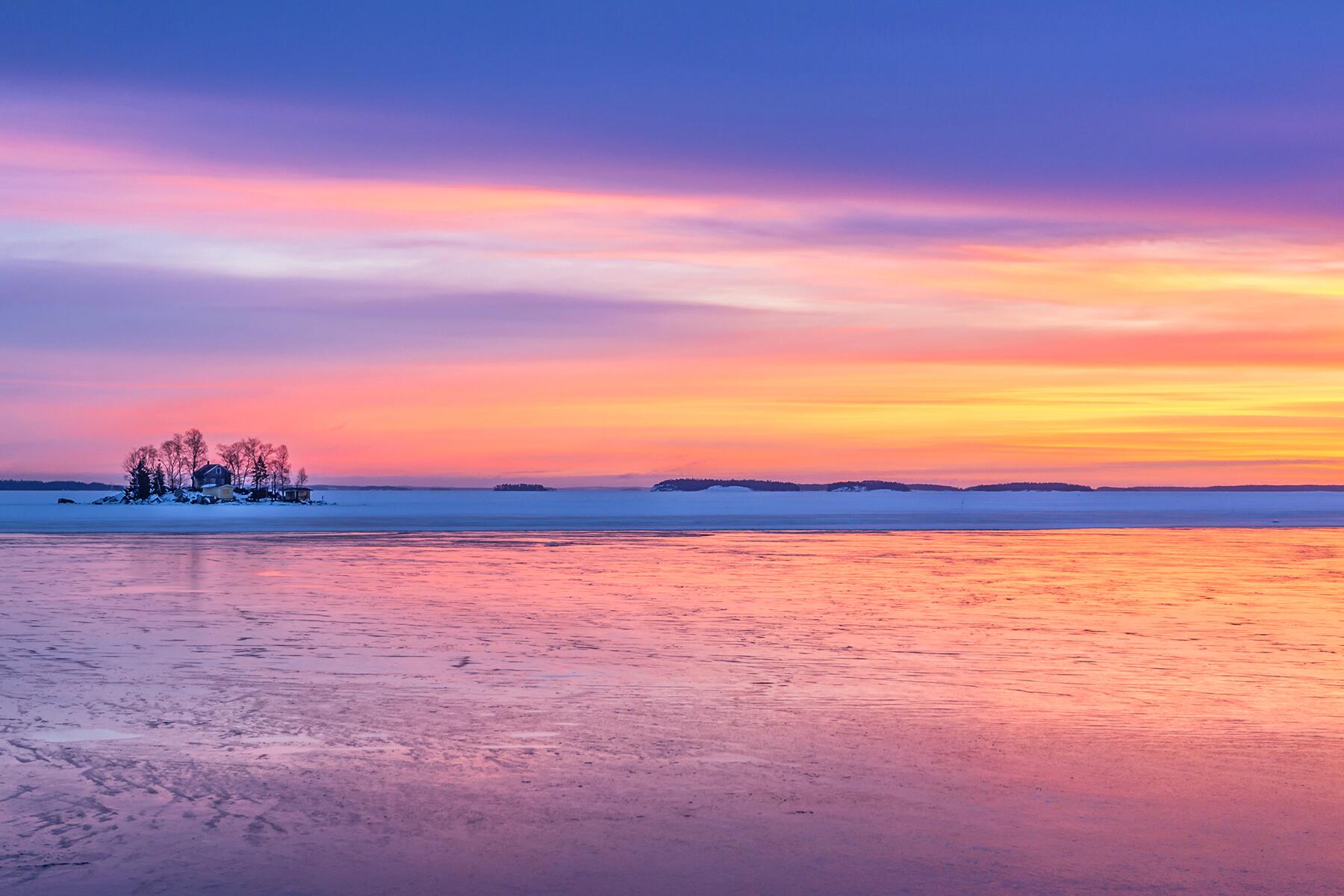- ⁄
- Travel News
- ⁄
- Outdoors •
- Travel Tips
Oman is known for its long beaches along the Indian Ocean, the dramatic Hajar Mountains, the desert, and its friendly and accessible people.
History in the shape of ancient forts is evident everywhere, and the food and traditions of Oman’s people draw many visitors. But there are some natural wonders that are easily missed unless you know where to look. Behold the marvels and mysteries of Oman’s intriguing landscape.
Top Picks for You
The Musandam Peninsula
The Musandam Peninsula is an enclave of Oman surrounded by the United Arab Emirates, and as such is a hidden marvel that’s often overlooked. The mountainous peninsula is carved into by fjords called khors, with small villages nestled in bays only reached by four-wheel drives across rugged terrain, and a coastline that is best appreciated from a boat. The water is teeming with fish and dolphins and is perfect for scuba diving and snorkeling. Trips on traditional dhows are the way to explore over and underwater.
Jebel Akhdar, Oman's Green Mountain
Inland from Muscat, there is a small turn off the main road to Nizwa, and the winding road leads to a secret spot where roses grow and even during Oman’s hot summers, a cool breeze and lower temperatures offer a welcome respite. Jebel Akhdar, meaning green mountain, lies 2000 meters above sea level and is a plateau surrounded by the brown and gray Hajar mountain range, a veritable oasis. This is where the roses grow for Oman’s perfume and rose water industry, where pomegranates and apricots ripen on the trees, and the air smells sweet.
Recommended Fodor’s Video
Frankincense Trees
These ancient trees look utterly insignificant. Gnarled and twisted, quite small and quite honestly, boring-looking. But there is more to this tree than you could possibly imagine. Famed for the aromatic sap emerging from the bark of the tree, this liquid that hardens into yellow droplets has brought fame and riches to the region for 1000s of years. Burnt to keep bad spirits away in temples and churches, the sap is also used as kohl eyeliner, a fragrant paste to perfume hands, and as a vital ingredient for embalming. The great demand made frankincense more valuable than gold at one time, resulting in caravans of immense magnitude–caravans of some 3,000 camels were not rare–and wealth, making the frankincense route more prosperous than the silk route.
Wadi Ghul Canyon
Oman’s answer to the Grand Canyon, the scenery of Wadi Ghul is dramatic and stunning. The canyon is over 650 feet deeper than the Grand Canyon and a walk right along the edge not only offers views of the carved-out landscape but also leads to an abandoned village, Al Shab. Along the way, you’ll find Omani women sitting by the side of the path selling local handicrafts and jewelry. There is a 10-hour hike (called W4) down into the canyon, but it’s only recommended for expert hikers.
The Oryx Sanctuary
Legend has it that the oryx, when seen from the side with its long straight horns in parallel, gave rise to the myth of the unicorn. The large white antelopes are indigenous to the desert region of the Arabian Peninsula, but severely endangered–they’re even thought to be extinct in the wild. The Arabian Oryx Sanctuary was set up in the mid-1990s to great acclaim and is listed on the UNESCO World Heritage list. Alas, that did not stop the poachers, and the sanctuary was the first site ever to be removed from the UNESCO list in 2007. Since then, protection has been upped and oryx numbers have improved. And whilst the sanctuary is huge, if you are lucky enough to spot a desert unicorn, it is a sight worth seeing.
Bimmah Sinkhole
The sinkhole, effectively a hole in the rocky ground filled with water, is, in fact, a turquoise lagoon nearly a half-mile from the ocean, filled with clear water and a staircase leading down to the 65-foot-deep hole. Even though it’s large, the hole is impossible to see from the main road from Muscat, but it is signposted and the palm-front umbrellas and picnic tables nearby will give you a clue. The water is cold and refreshing–perfect in the Omani heat.
Wadi Shab
Not far from the Bimmah Sinkhole lies Wadi Shab, a veritable oasis where you can get deep into the valley by walking and swimming through rock pools. It all starts with a walk along the valley through imposing mountains. Palm trees line the path and a small stream gurgles beside you. But if you head further, you will start climbing over boulders and rocks (it not too difficult!) until you come to rock pools. The rock pools are small and shallow at first, but you’ll need to squeeze (comfortably) through small openings between the rocks until you reach a larger pool taking you deeper into the valley. It’s not too far–but you will need to be comfortable swimming. You’ll be rewarded with a pool of clear water surrounded by mountains, and a feeling that you are the only person in the world.
Sawadi Beach
Sawadi Beach lies north of Muscat off the main road to Sohar, reportedly the birthplace of Sindbad the Sailor from the 1001 Arabian Nights stories. It is not only a great beach for swimming and snorkeling, but around low tide, the shore is literally covered in shells and starfish. There are also several small islands nearby which are accessible on foot at low tide. The largest one has a path to the top and a small historic watchtower to explore. A nearby beach resort offers some water sports equipment and a restaurant, but the place is also perfect for a picnic.
The Empty Quarter
The Rub al Khali or Empty Quarter region of Oman is just that: endless waves of golden sand dunes waiting to be explored–the largest continuous stretch of sand in the world. Best tackled with a driver or a local expert at hand, the vast desert may sound monotonous, but it is not. Camping out, dune-bashing (a rather exhilarating way of driving across the dunes), and spotting falcons, desert foxes, and the elusive Arabian cheetah will allow you to experience the utter silence of this region and see a sky as you have never seen before. The sunrises and sunsets are truly magical.
The Hot Springs of Nakhl
The Al Hajar mountain range near Muscat is riddled with hot springs, but this spot, hidden behind the imposing fort of Nakhl, is a perfect picnic spot. Drive along a palm-tree-lined track past vegetable gardens watered by the old falaj watering system until you reach a perfect little stream. Further down, you can watch the local women wash their laundry, but upstream by the springs you can sit and picnic. Kids paddle in the stream trying to catch tadpoles, and at weekends and holidays, many people bring musical instruments and sing and dance. There’s a lively atmosphere with everybody sitting on boulders enjoying the oasis-like scenery and the warm water. Don’t forget to explore the fort–it has fabulous views across the valley.





